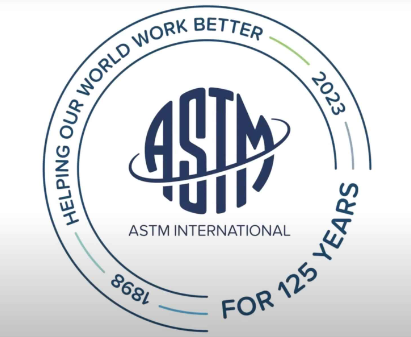Global standards organization ASTM International has launched the Additive Manufacturing Quality (AMQ) Certification program for manufacturers using metal AM.
The AMQ Certification program is specifically developed to guarantee the production of consistently high-quality parts by AM manufacturers. This program is founded upon two ISO/ASTM standards and necessitates manufacturers to comply with requirements for purchased AM parts, establish an AM-specific quality management system, and maintain control over the operation and production of the metal powder bed fusion (PBF) process. AM companies like Sintavia (Florida), Morf3D and MIMO TECHNIK (California), and ST Engineering Land Systems (Singapore), have been certified against this program.
“We are excited to announce the launch of the Additive Manufacturing Quality (AMQ) Certification program, which highlights the commitment of additive manufacturers to producing parts with consistent quality,” said Dr. Mohsen Seifi, ASTM International vice president of global advanced manufacturing programs. “This certification, along with our other AM certifications, provides the industry with a reliable means to demonstrate their dedication to excellence and compliance with established standards. We are proud to support the growth of AM through our comprehensive certification programs.”

Standards serving as the foundation for the certification program
The AMQ certification program consists of two ISO/ASTM standards namely, ISO/ASTM 52901-2017, and ISO/ASTM 52904-2019.
ISO/ASTM 52901:2017 is a standard that provides guidance on ensuring that the purchased parts for additive manufacturing meet specific requirements. The standard outlines the necessary information that should be exchanged between the customer and the part provider during the ordering process. This includes details about the customer’s requirements, part design, material selection, desired characteristics and properties of the final product, inspection criteria, and methods for determining part acceptance. ISO/ASTM 52901:2017 serves as a “foundation” for ensuring that the purchased parts meet minimum requirements. If customers have more specific or stringent requirements, they can include additional specifications when placing their orders.
The ISO/ASTM 52904-2019 standard provides guidelines on operating and controlling metal powder bed fusion (PBF) machines and processes, specifically for critical applications such as aerospace components and medical implants. It outlines requirements for the production of actual parts and test samples using PBF technology, utilizing either laser or electron beams. It is important to highlight that while this standard addresses important aspects, it does not encompass all safety concerns associated with its use. Therefore, users have the responsibility to establish appropriate safety, health, and environmental practices, and to ensure compliance with regulatory limitations before employing it. The development of this international standard followed globally recognized principles for standardization as set by the World Trade Organization Technical Barriers to Trade (TBT) Committee.
The AMQ certification program is structured in a modular manner, providing flexibility for organizations to select individual certifications or combine them according to their specific requirements. This approach enables the establishment of a facility that aligns with the necessary criteria for producing high-quality parts, says ASTM International.
Apart from the AMQ Certification, ASTM International provides two additional certification programs for additive manufacturing (AM): AM Personnel Certification and Facility Safety Certification. The AM Personnel Certification ensures that AM operators are qualified to produce parts using metal laser powder bed fusion (PBF-LB/M) processes on specific metal AM platforms, thereby verifying their competence in machine operations. On the other hand, the Facility Safety Certification evaluates the safety and compliance of an AM facility based on published codes and standards, ensuring that the operations are carried out in a safe and compliant manner.

Quality assurance certificates in the aerospace and medical sector
Precision ADM, a Canadian engineering and additive manufacturing service provider, obtained two new Quality Management System (QMS) certifications. These certifications ensure the company’s ability to maintain consistent production and enhance its capabilities to serve the aerospace industry. Martin Petrak, CEO of Precision ADM, which is based in Winnipeg, Manitoba, comments, “Our team continues to prove to be industry leaders. In 2017 we were the first Canadian metal AM service provider to achieve ISO 13485 certification for medical applications, and now in 2018 we are again the first to hold both certifications for medical and aerospace.”
Medical device manufacturer Insight Surgery’s (previously 3D LifePrints) anatomical models and 3D printed surgical guides received ISO certification for its quality assurance procedures. The ‘Embedmed’ Quality Management System (QMS) employed by Insight Surgery, to maintain the superior quality of its medical products, has received recognition for its compliance with the ISO 13485:2016 standard. By successfully meeting the rigorous quality guidelines of this accreditation, Insight Surgery has proceeded with providing its range of patient-specific devices.
What does the future of 3D printing for the next ten years hold?
What engineering challenges will need to be tackled in the additive manufacturing sector in the coming decade?
To stay up to date with the latest 3D printing news, don’t forget to subscribe to the 3D Printing Industry newsletter or follow us on Twitter, or like our page on Facebook.
While you’re here, why not subscribe to our Youtube channel? Featuring discussion, debriefs, video shorts, and webinar replays.
Are you looking for a job in the additive manufacturing industry? Visit 3D Printing Jobs for a selection of roles in the industry.
Featured image shows ASTM International was established in 1898. Image via ASTM International.



